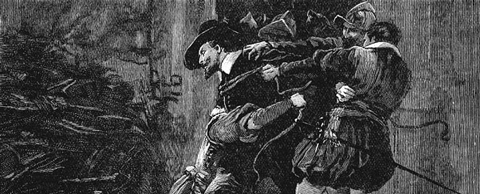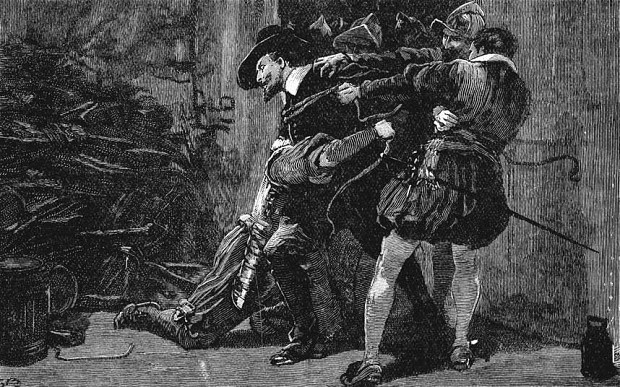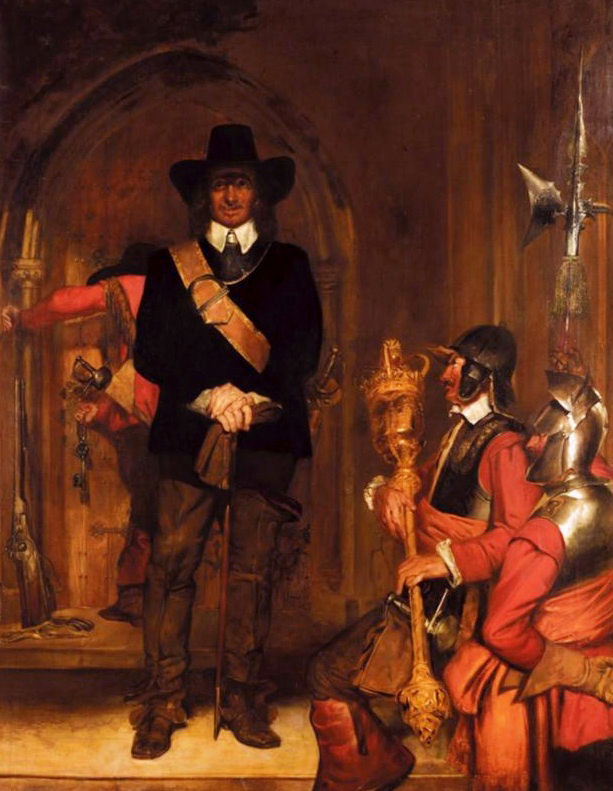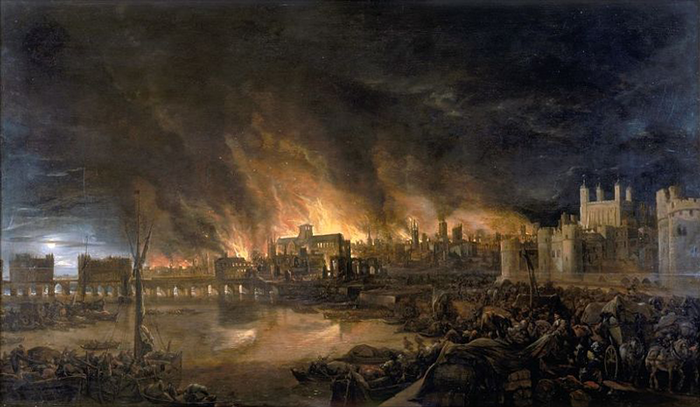
The Stuarts: 1603 to 1714
The Tudor dynasty ended upon Elizabeth I’s death in 1603. Elizabeth I, the ‘Virgin Queen’, left no direct heir – therefore, her cousin King James VI of Scotland, also became James I of England and Ireland. After centuries of Scottish resistance to English rule, an accident of birth ended up uniting the countries under one ruler.
James I of England, a devout Protestant, immediately faced Catholic resistance in the form of a plot to blow up Parliament on 4 November 1605. One of the conspirators, Guy Fawkes, was executed along with seven others, and the foiling of this plot is still celebrated with fireworks and bonfires on 5 November every year.

When James I died in 1625 the crown passed to his son Charles I, whose high taxes and increasingly authoritarian attempts to strip Parliament of its power led to civil war in 1642. After years of battles between the Royalists and the Parliamentarians, Charles I was imprisoned, and then executed for treason on 30 January 1649.
Regicide was a serious matter – since medieval times, people had believed that a ruler’s power was granted by God. The beheading of Charles I was a major break with this traditional way of thinking, and ushered in a new period in Britain known as the Commonwealth. From 1649 to 1653, the Parliament governed the kingdom as a republic.

Then, from 1653 until his death in 1658, a Parliamentarian general, Oliver Cromwell, was named Lord Protector by the army, and governed with an iron fist. Upon Cromwell’s death his son Richard became Lord Protector, but the army did not respect him and he was eventually forced out. In 1660, Parliament asked Charles I’s son, who was living in exile, to return and become King Charles II.
Charles II’s reign saw dramatic changes, both good and bad. London was ravaged first by the bubonic plague in 1665, which killed almost 25% of the city’s inhabitants, and then by the Great Fire in 1666, which gutted the City of London. Around the same time, however, the Royal Society was founded, and great thinkers such as Sir Isaac Newton and John Locke were radically altering our understanding of the world.

Additionally, all that switching between Protestantism and Catholicism had resulted in deep social repression, and Charles II’s reign – known as The Restoration – saw a swift rise in the popularity of dancing, theatre, flamboyant fashion, and new beverages called coffee and tea.
When Charles II died in 1685 and the throne passed to his Catholic brother, James II, the Protestants of England decided that they were tired of living in fear of Catholic oppression. They therefore invited Mary, James II’s daughter, and her husband William of Orange, king of the Netherlands, to invade England and take up the crown in 1688. The public quickly rallied behind the couple, and James II fled to France. This takeover became known as the Glorious Revolution.
Much of Great Britain as we know it began to take shape during this time. Mary II and William III’s reign cemented Protestantism’s primacy in England and Scotland. Furthermore, the Bill of Rights, a law passed in 1689, strictly limited the power of the monarchs and made Parliament the dominant governing body.
The Bank of England was founded in 1694, in part to facilitate the financing of William III’s wars in Europe, and the civil bureaucracy grew as well. When the crown passed to Mary II’s sister Anne in 1702, Great Britain was on the verge of modernity.
Queen Anne was instrumental in uniting England and Scotland into one nation, and the Acts of Union of 1707 were signed after much negotiating by commissioners that she appointed. Upon the signing, Anne attended a thanksgiving service in St Paul’s Cathedral, and she also became the first monarch to ever rule over Great Britain.
When Anne died in 1714 she was succeeded by her German cousin George of Hanover in accordance with the 1701 Act of Settlement, which stipulated that only Protestants could inherit the crown. This signalled the beginning of the Georgian era, with major economic and social change waiting just over the horizon.

